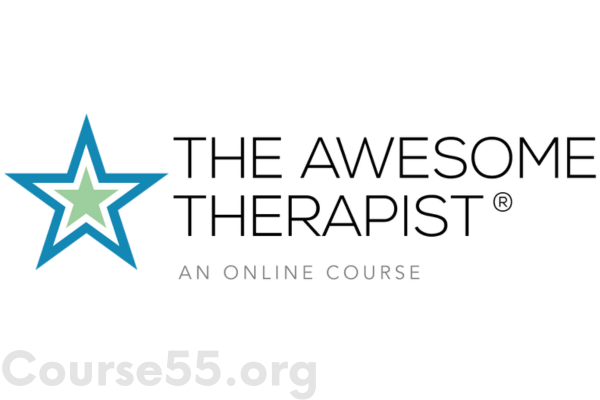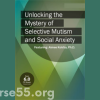Unlocking the Mystery of Selective Mutism and Social Anxiety by Aimee Kotrba
$199.00 Original price was: $199.00.$23.10Current price is: $23.10.
Unlocking the Mystery of Selective Mutism and Social Anxiety – Immediate Download!
Content Proof:

Within the field of child psychology, gaining a deeper understanding of selective mutism and social anxiety provides essential knowledge for parents, educators, and clinicians. Led by Dr. Aimee Kotrba, a specialist in assessing and treating these conditions, this insightful seminar sheds light on the complexities of selective mutism and its strong connection to social anxiety. Dr. Kotrba employs a dynamic presentation style, incorporating engaging narratives and humor to make the learning experience both educational and relatable. The goal is to equip attendees with practical techniques to better support children experiencing these challenges, ultimately enhancing their communication abilities and social engagement.
Understanding Selective Mutism
Selective mutism is frequently misinterpreted, creating obstacles for many children. This condition often appears in social settings where a child may be talkative at home but becomes silent in the presence of peers, teachers, or unfamiliar adults. Dr. Kotrba stresses that this behavior is not simply a refusal to speak but is deeply rooted in anxiety. Recognizing this distinction is vital for successful intervention. For many children, the anxiety surrounding social interactions and the fear of being judged can be overwhelming, leading them to avoid verbal communication entirely.

Causes of Selective Mutism
Several contributing factors play a role in the development of selective mutism, including genetic predisposition, environmental influences, and psychological elements. Children with a family history of anxiety disorders or those exposed to stressful environments may be at a higher risk. Additionally, an inherently reserved or introverted temperament can further influence a child’s ability to interact with others.
Connection to Social Anxiety
Research highlights a significant link between selective mutism and social anxiety disorder. Studies indicate that nearly 80% of children diagnosed with selective mutism also meet the diagnostic criteria for social anxiety, according to the American Psychiatric Association. Understanding this overlap is crucial, as many intervention techniques can address both conditions simultaneously.
Identifying Symptoms
The following key signs can aid in recognizing selective mutism and social anxiety:
- Persistent inability to speak in specific social environments
- Extreme distress when required to engage in verbal interactions
- Avoidance of social situations and withdrawal from others
- Physical signs of anxiety, such as sweating or trembling, during interactions
- Significant contrast in communication behavior, speaking freely at home but not in public settings
Assessment Approaches
Dr. Kotrba introduces various diagnostic methods, emphasizing the importance of early detection for successful intervention. One of the primary tools she discusses is the Frankfurt Scale, which offers a structured way to evaluate selective mutism. This assessment method helps distinguish selective mutism from other speech-related challenges, allowing for more precise and individualized treatment plans.
Developing Effective Intervention Plans
A key aspect of Dr. Kotrba’s expertise is her ability to design tailored intervention strategies. She emphasizes that each child’s needs should be carefully considered when crafting a plan. While no single approach works for every case, she underscores the importance of collaboration between parents, educators, and therapists in creating a well-rounded support system.
Actionable Strategies for Treatment
During the seminar, Dr. Kotrba outlines practical strategies to assist children with selective mutism and social anxiety. Some of the most effective methods include:
- Establishing Predictability: Maintaining a stable environment to help children feel more at ease.
- Gradual Desensitization: Introducing social settings in a controlled and comfortable manner to minimize stress.
- Encouraging Alternative Communication: Using play and creative outlets to foster verbal expression in a non-threatening way.
- Reinforcing Progress: Recognizing and celebrating small communication achievements to build confidence.
These strategies are easy to implement and empower parents and teachers to play an active role in helping children overcome their difficulties.
Real-World Case Studies
Dr. Kotrba reinforces her lessons through case studies that illustrate the effectiveness of her methods. One notable case involved a young girl who was completely silent in school settings. Through gradual exposure techniques and engaging activities, she gained confidence and, over time, started communicating with classmates. These real-life success stories offer valuable insight into how intervention can lead to significant improvements, inspiring hope for those facing similar challenges.
The Power of Community Support
Highlighting the importance of a strong support system, Dr. Kotrba stresses that collaboration between parents, teachers, and mental health professionals is essential for a child’s success. By fostering an understanding and patient community, children feel more comfortable stepping outside their comfort zones. Raising awareness about selective mutism and social anxiety within schools and local communities encourages greater empathy and support among peers.
Educators’ Role in Intervention
Teachers play a crucial role in supporting children with selective mutism. Training educators to recognize anxiety-related behaviors and implement effective accommodations can have a profound impact. Dr. Kotrba advocates for adaptive communication strategies in the classroom and encourages teachers to maintain open communication with parents to ensure a well-rounded approach to each child’s needs.
Parental Support and Engagement
Parental involvement is equally vital in helping children overcome selective mutism. Parents are encouraged to foster communication in a relaxed setting, avoiding pressure while promoting verbal engagement through activities such as reading together, interactive games, and role-playing social situations. By actively supporting their child’s progress, parents can lay the foundation for stronger communication skills and social confidence.
Key Takeaways from the Seminar
Dr. Kotrba’s seminar delivers essential insights for anyone seeking to better understand and address selective mutism and social anxiety. Some key takeaways include:
- Recognizing the Connection: Understanding the link between selective mutism and social anxiety is crucial for targeted interventions.
- Individualized Assessment: Utilizing diagnostic tools like the Frankfurt Scale aids in accurate and effective treatment planning.
- Practical Strategies: Implementing structured, step-by-step techniques can help children overcome communication barriers.
- Community Involvement: Collaboration between caregivers, educators, and therapists fosters a supportive environment for children to thrive.
Conclusion
In summary, Dr. Aimee Kotrba’s seminar, “Decoding Selective Mutism and Social Anxiety,” bridges the gap between theoretical knowledge and practical application. Her research-backed insights, combined with actionable strategies, make this an invaluable resource for those working with children who struggle with communication difficulties. By prioritizing understanding, collaboration, and innovative approaches, Dr. Kotrba empowers attendees with the tools needed to help children build confidence, develop social skills, and overcome the challenges associated with selective mutism and social anxiety.
Frequently Asked Questions:
Business Model Innovation: We operate a group buying strategy, allowing participants to share costs and access popular courses at reduced prices. This model benefits individuals with limited financial resources, despite concerns from content creators about distribution methods.
Legal Considerations: The legality of our operations involves complex issues. Although we don’t have explicit permission from course creators to resell their content, there are no specific resale restrictions stated at the time of purchase. This ambiguity creates an opportunity for us to provide affordable educational resources.
Quality Control: We ensure that all course materials purchased are identical to those offered directly by the creators. However, it’s important to understand that we are not official providers. As such, our offerings do not include:
– Live coaching calls or sessions with the course author.
– Access to exclusive author-controlled groups or portals.
– Membership in private forums.
– Direct email support from the author or their team.
We aim to reduce the cost barrier in education by offering these courses independently, without the premium services available through official channels. We appreciate your understanding of our unique approach.
Be the first to review “Unlocking the Mystery of Selective Mutism and Social Anxiety by Aimee Kotrba” Cancel reply
You must be logged in to post a review.

















Reviews
There are no reviews yet.